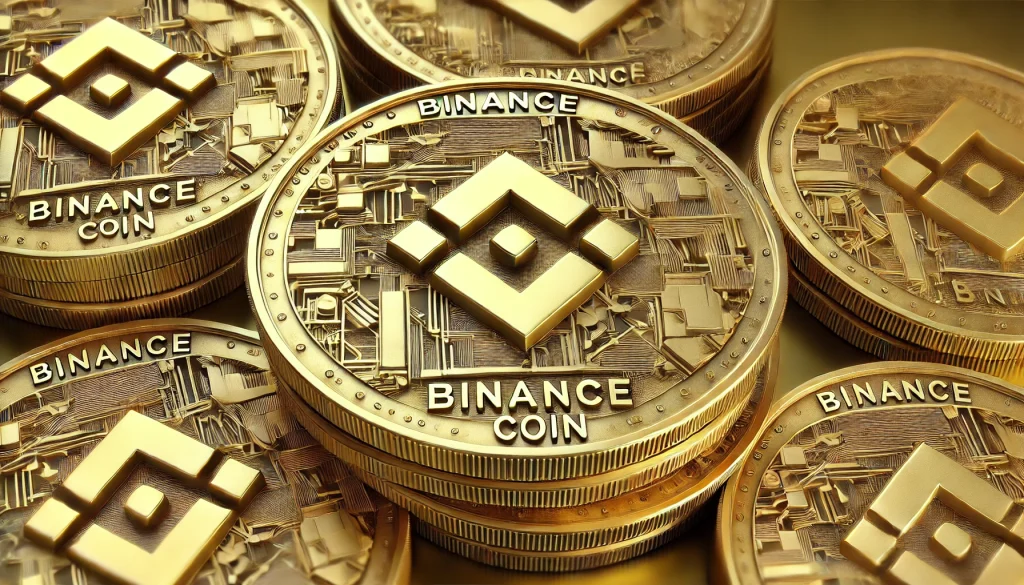Introduction

This review explores popular cryptocurrencies, their unique features, and overall performance. As the crypto market evolves, understanding the top players becomes crucial for both new and experienced investors. We will focus on the key characteristics of Bitcoin, Ethereum, Ripple (XRP), Cardano, and Binance Coin (BNB).
Overview
Bitcoin (BTC)

Bitcoin is the first and most well-known cryptocurrency, often referred to as digital gold. It serves as a store of value and a medium of exchange. Bitcoin operates on a Proof of Work (PoW) consensus mechanism, ensuring high security but consuming significant energy.
Ethereum (ETH)

Ethereum is a decentralized platform enabling smart contracts and decentralized applications (DApps). It transitioned from PoW to Proof of Stake (PoS) with Ethereum 2.0, enhancing scalability and sustainability. Ethereum is known for its versatility and robust developer community.
Ripple (XRP)

Ripple focuses on facilitating cross-border payments efficiently. It uses the Ripple Protocol Consensus Algorithm (RPCA), allowing faster and cheaper transactions compared to traditional banking systems. However, its centralization and ongoing legal issues with the SEC pose challenges.
Cardano (ADA)

Cardano is known for its strong development activity, scalability, and low transaction costs. It uses a PoS consensus mechanism, aiming to provide a more secure and sustainable blockchain. Cardano’s native token, ADA, has seen significant growth due to its dedicated validator network and robust ecosystem.
Binance Coin (BNB)

BNB is the native token of the Binance exchange, used to pay for trading fees, participate in token sales, and more. Despite market fluctuations, BNB remains a top cryptocurrency due to its utility and the reputation of the Binance platform.
Pros and Cons
Below is a table summarizing the pros and cons of these popular cryptocurrencies:
| Cryptocurrency | Pros | Cons |
|---|---|---|
| Bitcoin | High security, widely recognized, strong store of value | High energy consumption, slower transactions |
| Ethereum | Supports smart contracts and DApps, scalable with Ethereum 2.0 | High gas fees, network congestion |
| Ripple (XRP) | Fast and low-cost transactions, strong cross-border payment system | Centralization concerns, ongoing legal issues |
| Cardano (ADA) | Strong development activity, scalable, low transaction costs | Slower adoption compared to competitors |
| Binance Coin | Utility in Binance ecosystem, discounted trading fees | Centralization, regulatory scrutiny |
Pros
Bitcoin’s high security and wide recognition make it a trusted store of value. Ethereum supports a broad range of applications through smart contracts and DApps. Ripple offers efficient cross-border payments, while Cardano excels in scalability and low costs. Binance Coin provides utility within the Binance ecosystem and discounted trading fees.
Cons
Bitcoin’s high energy consumption and slower transactions are notable drawbacks. Ethereum faces high gas fees and network congestion. Ripple’s centralization and legal issues raise concerns, while Cardano’s adoption rate lags behind competitors. Binance Coin’s centralization and regulatory scrutiny could impact its future.
In-Depth Analysis
Design

Bitcoin: Bitcoin’s design prioritizes security and decentralization. Its PoW consensus mechanism ensures robust protection against attacks but requires significant energy.
Ethereum: Ethereum’s transition to PoS with Ethereum 2.0 aims to improve scalability and reduce energy consumption. It supports a wide range of applications through its smart contract platform.
Functionality
Bitcoin primarily serves as a store of value and medium of exchange. Ethereum offers extensive functionality, supporting various applications, including DeFi, NFTs, and DAOs. Ripple focuses on cross-border payments, providing fast and low-cost transactions. Cardano emphasizes scalability and security, while Binance Coin is integrated into the Binance ecosystem for various uses.
Durability
Bitcoin’s durability is evident in its longstanding position as the leading cryptocurrency. Ethereum’s network upgrades enhance its longevity. Ripple, despite legal challenges, continues to secure partnerships and expand its use case. Cardano’s robust development and validator network ensure its growth, and Binance Coin benefits from Binance’s strong market presence.
User Experience

Users appreciate Bitcoin for its reliability and security. Ethereum’s smart contract capabilities attract developers and users alike, though high fees can be a barrier. Ripple’s fast transactions are beneficial for cross-border payments. Cardano’s low costs and scalability make it user-friendly, while Binance Coin’s utility in the Binance ecosystem enhances its user experience.
Value for Money
Bitcoin offers strong value as a store of value, despite its high price. Ethereum’s extensive application support justifies its costs. Ripple’s efficiency provides good value for cross-border transactions. Cardano’s scalability and low fees offer excellent value, and Binance Coin’s utility within Binance adds significant value for users of the platform.
Comparison
When comparing popular cryptocurrencies, Bitcoin and Ethereum stand out for their extensive adoption and robust ecosystems. Bitcoin is primarily a store of value, while Ethereum supports a wide range of applications through smart contracts. Ripple offers efficiency in cross-border payments, whereas Cardano focuses on scalability and low transaction costs. Binance Coin provides utility within the Binance ecosystem, offering benefits like discounted trading fees.
Bitcoin vs. Ethereum: Bitcoin’s primary use is as a digital gold, providing a secure store of value. Ethereum, on the other hand, supports smart contracts and DApps, making it more versatile. While Bitcoin’s PoW mechanism ensures high security, Ethereum’s transition to PoS aims to enhance scalability and reduce energy consumption.
Ripple vs. Cardano: Ripple excels in cross-border payments with its fast and low-cost transactions. Cardano, however, focuses on scalability and security through its PoS mechanism. Ripple faces centralization concerns and legal issues, while Cardano boasts strong development activity and a dedicated validator network.
Table of Comparison
| Feature | Bitcoin | Ethereum | Ripple (XRP) | Cardano (ADA) | Binance Coin (BNB) |
|---|---|---|---|---|---|
| Consensus Mechanism | PoW | PoS | RPCA | PoS | PoSA |
| Transaction Speed | 7 TPS | 30 TPS | 1,500 TPS | 250 TPS | 50-100 TPS |
| Transaction Fees | High | High | Low | Low | Low |
| Primary Use Case | Store of value | Smart contracts, DApps | Cross-border payments | Scalability, security | Utility in Binance |
| Decentralization | High | High | Moderate | High | Moderate |
FAQ
What are Popular Cryptocurrencies?
Popular cryptocurrencies are widely recognized digital assets like Bitcoin, Ethereum, Ripple, Cardano, and Binance Coin, each serving different purposes and use cases.
How do I choose the best cryptocurrency to invest in?
Answer2
Are there risks associated with investing in cryptocurrencies?
Yes, cryptocurrencies are volatile and subject to regulatory changes. It’s essential to research and understand the risks before investing.
Conclusion
Popular cryptocurrencies like Bitcoin, Ethereum, Ripple, Cardano, and Binance Coin each offer unique features and benefits. Bitcoin stands out as a store of value, while Ethereum excels in supporting applications through smart contracts. Ripple provides efficient cross-border payments, Cardano focuses on scalability and security, and Binance Coin offers utility within the Binance ecosystem. Choosing the right cryptocurrency depends on individual needs and investment goals.
Rating
- Bitcoin: ★★★★☆ (4.5/5)
- Ethereum: ★★★★☆ (4.5/5)
- Ripple (XRP): ★★★★☆ (4/5)
- Cardano (ADA): ★★★★☆ (4/5)
- Binance Coin (BNB): ★★★★☆ (4/5)

